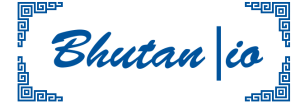Python Data Visualization: Data is food and fuel today. So is the job of data scientists and data analysts. New York Post listed data engineers as one of the hottest jobs of 2020.
With the boom of internet connectivity and its services over the globe, the amount of data we generate is ‘mind-boggling’. With the rise of the use of the Internet of Things (IoT), the rate of data generation would keep accelerating. This makes visualizing data harder than ever before.
As a matter of fact, the size of data becomes more and more unmanageable. As a result demand for people with good tentacles to grasp the meaningful information from these unorganized data will keep on growing.
A good post in Forbes talks about how much data is generated every day. According to it, some of the data sources are the internet, social media, and communication tools. Others include IoT and other services like weather forecasting, video streaming, etc.
Over the years, Python has become one of the dominating programming languages in the tech arena. It is relevant to the field of data science a it provides a lot of data visualization tools for managing data.
Amongst many uses of Python programming language in data science, data visualization is an integral part.
In this post, I am going to share the TOP 5 Python data visualization libraries available. The TOP rating is simply based on the number of stars rating in the Python Package Index (PyPi). It is a community-driven repository of software for the Python programming language.
You read any of these libraries’ documentation. Probably, you will get overwhelmed with the mathematical concepts involved in data visualization.
BUT good news, Python is an easy-learn-learn language. You will enjoy the pythonic triumph once you get into it.
matplotlib
In one of my undergrad final projects, which was basically a computer vision project I used matplotlib extensively. Check the visual demonstration of the project in the YouTube link given below.
If you want to see the implementation source code of the project, the GitHub link is given in the description of the video.
You will find that many data science tutorials use matplotlib. According to PyPi project description of matplotlib: ‘it’ is a comprehensive library for creating static, animated, and interactive visualizations in Python.
Matplotlib generated production-quality visualization figures. These figures are platform-independent. So, it is the best open-source data visualization software.
Seaborn
Seaborn is a data visualization project built on matplotlib, and is closely related with pandas, yet another Python library.
Here is some of the functionality that seaborn offers:
- A dataset-oriented API for examining relationships between multiple variables
- Specialized support for using categorical variables to show observations or aggregate statistics
- Options for visualizing univariate or bivariate distributions and for comparing them between subsets of data
- Automatic estimation and plotting of linear regression models for different kinds of dependent variables
- Convenient views onto the overall structure of complex datasets
- High-level abstractions for structuring multi-plot grids that let you easily build complex visualizations
- Concise control over matplotlib figure styling with several built-in themes
- Tools for choosing color palettes that faithfully reveal patterns in your data
Bokeh
Bokeh is yet another Python data visualization tool. It is an interactive data visualization tool with modern browser support. It provides high-performance interactivity over large datasets or streaming data.
Bokeh data visualization has its binding for R and Scala too. R and Scala have very close relations with data science.
An easy-to-follow installation guide can be found in its PyPi documentation. It can be installed easily using pip or conda tools.
Please note that if you want to create charts with Python, you need an environment that has both a Python interpreter and supports graphics. I would recommend using Jupyter Notebook.
Geoplotlib
As its name stands for, it is a geographical data visualization toolbox. Its library supports the development of hardware-accelerated interactive visualizations and provides implementations of dot maps, kernel density estimation, spatial graphs, Voronoi tessellation, shapefiles, and many other spatial visualizations.
Follow the GitHub link to know more about this awesome data visualization tool.
ggplot
ggplot is a Python implementation of the grammar of graphics.
It is not intended to be a feature-for-feature port of `ggplot2 for R <https://github.com/hadley/ggplot2>`__–though there is much greatness in ggplot2, the Python world could stand to benefit from it. So there will be feature overlap, but not neccessarily mimicry (after all, R is a little weird).
ggplot -PyPi
The nstallation guide and documentation can be found in its PyPi description.

Conclusion
The data visualization tools mentioned above are very good alternatives to very expensive tools like Oracle Data Visualization software. These tools are not only easy-to-use but have a very large community driven by passion and enthusiasm.
You may also look into JavaScript charting libraries which is also a trending buzz.


